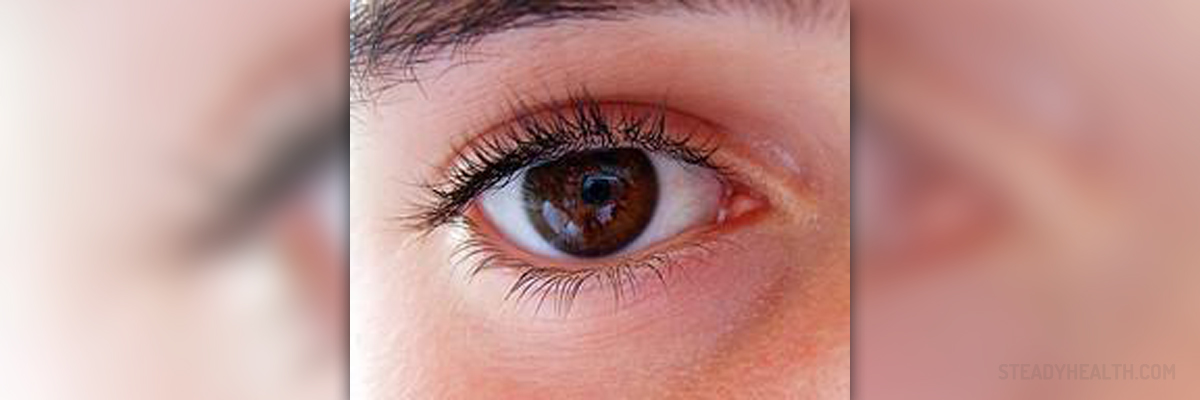
Retinitis pigmentosa is not a single medical condition. Instead it comprises several genetic diseases, all of which eventually cause partial or complete loss of vision. The progression of the disorder is characterized by gradual vision loss that first occurs in the form of tunnel vision and then is completely lost. Most patients are declared legally blind in their 40s or 50s. Fortunately, not all the patients will lose their sight. Sometimes some sight is retained. The amount of damage to the retina is practically individual.
Retinitis Pigmentosa is a Genetic Disorder
This is a genetic disorder, to be more precise progressive retinal dystrophy that triggers abnormalities of the retinal photoreceptors and the very retinal pigment epithelium, causing progressive loss of vision. Both rods and cones of the retina are affected. Initially damage to these cells leads to problems seeing in the dark (night blindness) which progresses into tunnel vision (loss of peripheral vision) and finally results in complete loss of vision.
The condition is blamed for specific rod-cone dystrophy in the form of apoptosis (programmed cell death). In the majority of cases rods are predominantly affected by this process. It is possible that genetic defects initiate damage to retinal pigment epithelium and cone photoreceptors as well. There are many genetic mutations associated with the condition and practically they determine what part of the retina will be affected and to what extent.
All in all, damage to the retina is experienced in the form of decreased vision at night, progressive loss of peripheral vision which makes patients feel as if they were looking through a tunnel and only in advanced cases they experience loss of central vision and end up completely blind.
Medical and Surgical Treatment for Retinitis Pigmentosa
Retinitis pigmentosa can be treated conservatively and surgically. Even though the available therapies are limited, most doctors emphasize that they can actually help patients and at least decelerate progression of the disease.
First of all, patients suffering from retinitis pigmentosa are due to have annual examinations. They routinely undergo visual filed testing. Every 5 years such patients are supposed to undergo ERG evaluations as well. Many times the exams show minimal changes in the vision which is encouraging and gives patients strength to move further with they lives feeling less disabled. Also, since there are many new treatments for various diseases emerging almost all the time, regular visits to the doctor will provide patients with information about clinical trials and new treatments available.
There are many medications patients with retinitis pigmentosa can be prescribed. For example, vitamin A/beta carotene is a powerful antioxidant and a vitamin that keeps retinal cells healthy. Certain studies have shown that daily intake of vitamin A palmitate may decelerate progression of the disease. Still, it is essential to determine the benefit of such therapy since large doses of vitamin A administered for a long period of time may have serious side effects.
Furthermore, patients may benefit from docosahexaenoic acid (DHA- an omega-3 polyunsaturated fatty acid) and Acetazolamide (a carbonic anhydrase inhibitor). Calcium channel blockers are primarily used in patients suffering from hypertension and cardiac disease. They, however, may also help individuals with retinitis pigmentosa.
Additionally, lutein and zeaxanthin have shown to prevent cone cell death. They are not synthesized by the body and can be only taken in the form of oral supplementation. Similar effects are achieved with valproic acid.
Finally, there are medications such patients are supposed to avoid because these trigger adverse effects which only make the condition worse. The potentially harmful medications include isotretinoin, sildenafil and vitamin E.
When it comes to surgical approach, these patients may benefit from cataract extraction, transplantation, retinal prosthesis and application of growth factors. Some of these treatments are still experimental.
What Research is Done for New Treatments?
Transplantation of small patches of retina may be highly efficient treatment for certain forms of retinitis pigmentosa. Today scientists investigate all the benefits of stem cells and their potential role in replacing the damaged retinal pigment epithelium. Unfortunately, this treatment is still not performed in humans and requires further testing.
Retinal prosthesis is a device that have been studied for several years. This is actually a phototransducing chip surgically inserted into the eye and placed onto the retinal surface. According to results obtained from tests on animals this device may stimulate the healthy ganglion cell layer. The device is also relatively stable and may function properly for certain period of time. Retinal prosthesis is now tested on humans too with hope that one day it will be able to help all the patients suffering from this genetic disease.
Surgical placement of specific growth factors (e.g. ciliary neurotrophic factor) into the eye is another potential cure for people suffering from retinitis pigmentosa. The results of phase I clinical trials are exceptional and encouraging.
And finally, medical experts put their hope in gene therapy that will one day be able to help not only these patients but many individuals suffering from other genetic disorders.

















Your thoughts on this
Loading...